Vote Now! What's Your Favorite Space Shuttle?
NASA's Six Space Planes
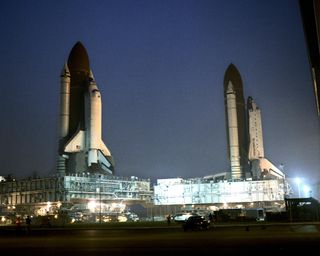
NASA has built six space shuttles since the start of its reusable spaceship program 30 years ago. Five of these shuttles flew in space (the last was used for glide tests). After two tragic accidents, three of those space-flown vehicles are left.The space shuttles look largely alike, but they each have a unique history, and their own list of proudest accomplishments. Let us know what your favorite NASA shuttle is here.
Enterprise
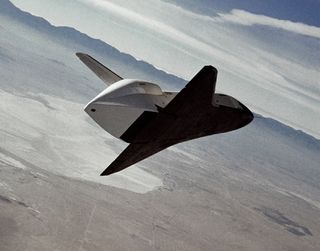
The test vehicle Enterprise was the first shuttle to be built. While it looked just like the other shuttles, Enterprise was constructed without main engines or a heat shield that could withstand re-entry through Earth's atmosphere, so it would never have been able to travel to space.However, Enterprise's glide tests from the upper atmosphere paved the way for the first space shuttle trips to orbit. Plus, it was named after Star Trek's Starship Enterprise, and the television series' creator and most of its original cast were on hand for the shuttle's dedication ceremony in 1976.
Columbia

The first space shuttle to launch to space, Columbia heralded a new era in spaceflight. When it lifted off on April 12, 1981, and then landed again safely back on Earth, it became the first reusable spaceship.Columbia went on to achieve other feats, including the longest space shuttle flight (17 days), the first shuttle launch of a commercial satellite, and the deployment of NASA's Chandra X-ray Observatory. Columbia and its seven-astronaut crew were tragically lost during re-entry to Earth in 2003.
Challenger
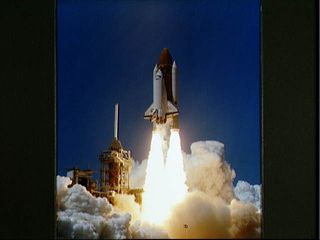
NASA's second orbiter to reach space, Challenger, launched on its maiden voyage on April 4, 1983.Challenger's accomplishments include launching the first American woman to space, Sally Ride, as well as the first African American astronaut, Guion Bluford. Challenger also hosted the first space shuttle spacewalk, and first in-space satellite repair mission. This orbiter was lost in a catastrophic accident, when Challenger and its seven-member crew were destroyed just after liftoff on Jan. 28, 1986.
Discovery

Discovery is NASA's most-flown space shuttle, with 39 missions under its belt. Discovery was also the first of NASA's remaining space-flown orbiters to be retired. After flying its final mission in February 2011, the orbiter began being processed for display at the Smithsonian National Air and Space Museum's facility outside Washington, D.C.Among the space shuttle Discovery's accomplishments are the launch of the Hubble Space Telescope, and the first "return-to-flight" missions after the Challenger and Columbia disasters.
Atlantis
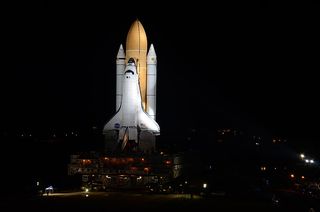
Atlantis, which first launched on October 3, 1985, will be the last space shuttle to fly. The orbiter is slated for its final mission July 8, 2011, after which NASA will retire the shuttle program.Atlantis deployed the Magellan probe to Venus and the Galileo spacecraft to Jupiter. In 1995, the shuttle Atlantis conducted the 100th U.S. manned spaceflight, which was the first shuttle docking with the Russian space station Mir. Atlantis also made the fifth and last shuttle servicing mission to the Hubble Space Telescope, in May 2009.
Endeavour
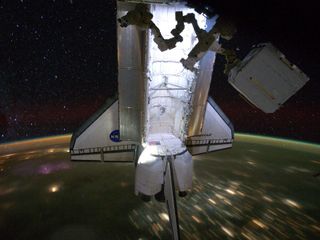
The youngest of NASA's shuttle fleet, Endeavour was built as a replacement after the loss of the shuttle Challenger in 1986.Named after the British sailing ship HMS Endeavour, the shuttle first flew on May 7, 1992. In 1993, Endeavour was used to conduct the first servicing mission to the Hubble Space Telescope, where astronauts successfully repaired the observatory's faulty optics. Endeavour launched the first American component of the International Space Station, the Unity module, in 1998.Endeavour made its final spaceflight in May 2011.
Join our Space Forums to keep talking space on the latest missions, night sky and more! And if you have a news tip, correction or comment, let us know at: community@space.com.
Get the Space.com Newsletter
Breaking space news, the latest updates on rocket launches, skywatching events and more!

Clara Moskowitz is a science and space writer who joined the Space.com team in 2008 and served as Assistant Managing Editor from 2011 to 2013. Clara has a bachelor's degree in astronomy and physics from Wesleyan University, and a graduate certificate in science writing from the University of California, Santa Cruz. She covers everything from astronomy to human spaceflight and once aced a NASTAR suborbital spaceflight training program for space missions. Clara is currently Associate Editor of Scientific American. To see her latest project is, follow Clara on Twitter.